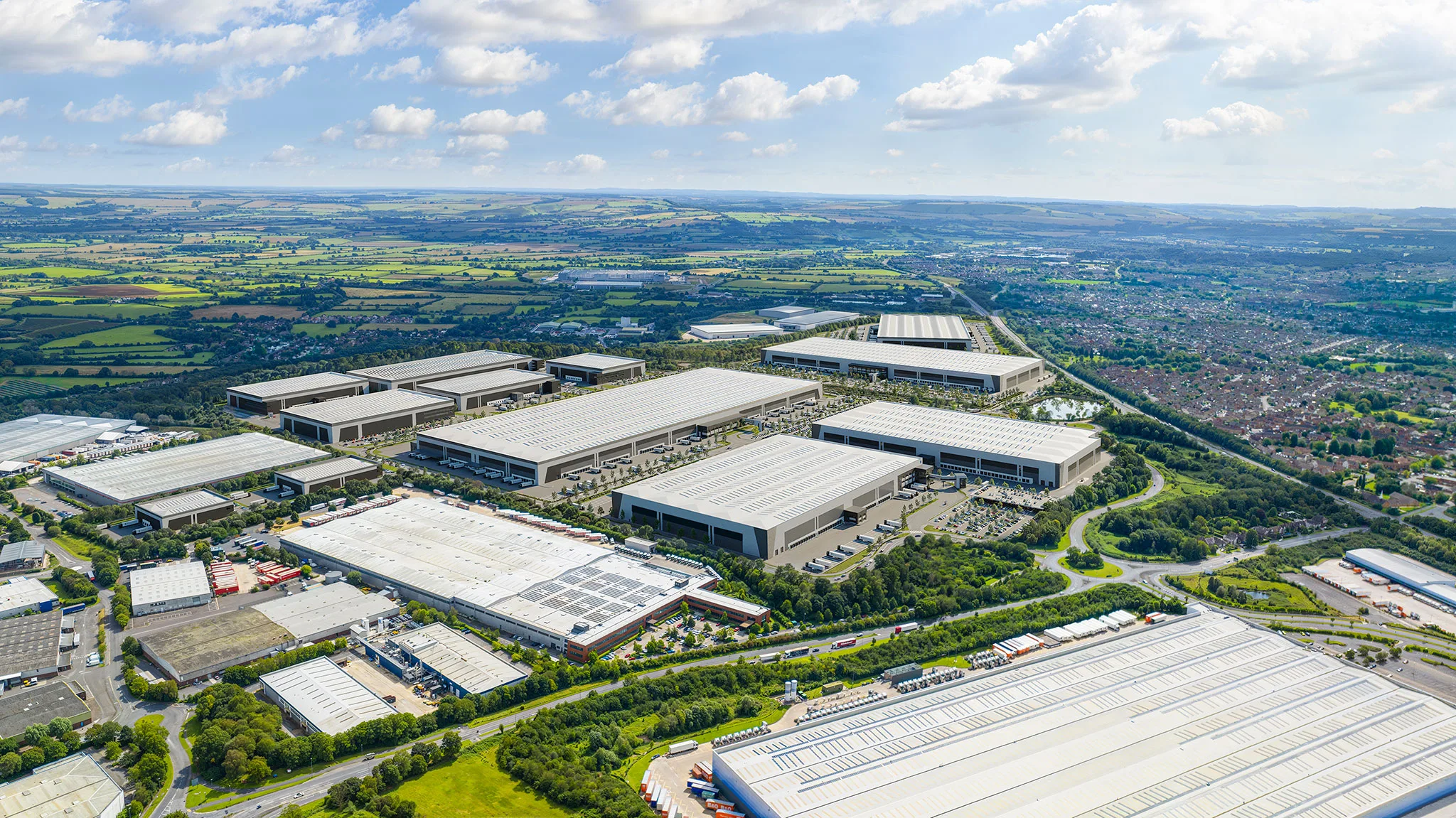
Panattoni Breaks Ground on the UK’s Largest Ever Speculative Logistics Facility in Swindon
Panattoni, Europe’s largest developer of industrial and logistics real estate, has commenced construction of a 915,000 sq ft speculative logistics facility at Panattoni Park Swindon—setting a new benchmark as the largest project of its kind ever undertaken in the UK.
The milestone follows the letting of Panattoni’s previous record-breaking development, an 885,000 sq ft unit at Avonmouth, underscoring the strength of demand in the large-scale logistics market and reaffirming the company’s confidence in its speculative development strategy.
Situated on the 360-acre site of the former Honda manufacturing plant, Panattoni Park Swindon is set to become a transformative logistics and industrial hub, delivering 7.2 million sq ft of state-of-the-art space. The first phase of development includes the newly launched 915,000 sq ft unit alongside a second 545,000 sq ft facility, which is already under construction. This phase represents a £300 million investment thus far, backed by U.S. capital – a major vote of confidence in the UK logistics market. Total project costs once complete will be c. £900 million and it will add over £1.2 billion to the economy over the next ten years, creating up to 7,000 jobs on site.
The site also includes a readily available plot for the largest single-unit with detailed planning permission in the UK at 1.2 million sqft, which is available on a pre-let basis and can be delivered within 10 months.
James Watson, Head of Development – Southern England & London at Panattoni UK, said:
“Having recently leased Panattoni Park Avonmouth, the largest speculative warehouse to have ever been built in the country, I’m pleased to announce today we are now commencing construction of an even larger speculative warehouse in Swindon. Panattoni Park Swindon embodies our model: scale, location, power, and quality—delivered ahead of demand. Panattoni Park Swindon is one of our largest developments globally and will be exemplary in its class.”
Vertical construction of the 915,000 sq ft unit is set to begin in June. The facility is designed to meet the requirements of high-volume logistics and manufacturing occupiers, featuring 21-metre clear internal height, a cross-docked service yard which extends over 90 metres, and market-leading ESG credentials. It will be BREEAM ‘Outstanding’ rated and achieve an EPC ‘A’ rating.
Strategically positioned just eight minutes from Junction 15 of the M4, the park enables access to 70% of the UK population within 4.5 hours, offering unparalleled connectivity for logistics operations.
Panattoni Park Swindon also places sustainability at the heart of its design. All buildings aim for Net Zero Carbon in construction, supported by on-site renewable energy generation via rooftop solar PV, EV charging infrastructure, high-efficiency lighting and cladding systems, rainwater harvesting, greywater recycling, and smart water management.
The wider masterplan includes significant biodiversity and community benefits, including a 10% biodiversity net gain, a new public park, wildflower meadows, tree planting, green corridors, and dedicated pedestrian and cycle routes.
With the vertical build of the UK’s largest speculative logistics unit commencing this summer, Panattoni continues to lead the sector—delivering sustainable, large-scale developments that respond directly to market demand.
Savills and DTRE are appointed as leasing agents at Panattoni Park Swindon (Savills having only been appointed as joint sole agents in April 2025).
Before Honda’s acquisition in 1985, the site played a critical role in British aviation. Built by the government in 1940, it served as a shadow factory producing Miles Master trainers, Spitfires, Seafires, and later the Supermarine Swift. In 1953, a South Marston-built Swift broke the UK airspeed record at 736 mph.
From 1985 to 2021, Honda produced over three million vehicles at the site, supporting up to 3,500 jobs and supplying markets across Europe and North America. Its closure marked the end of an era – but with the launch of Panattoni Park Swindon, the site enters a new chapter in advanced logistics and industrial employment.
